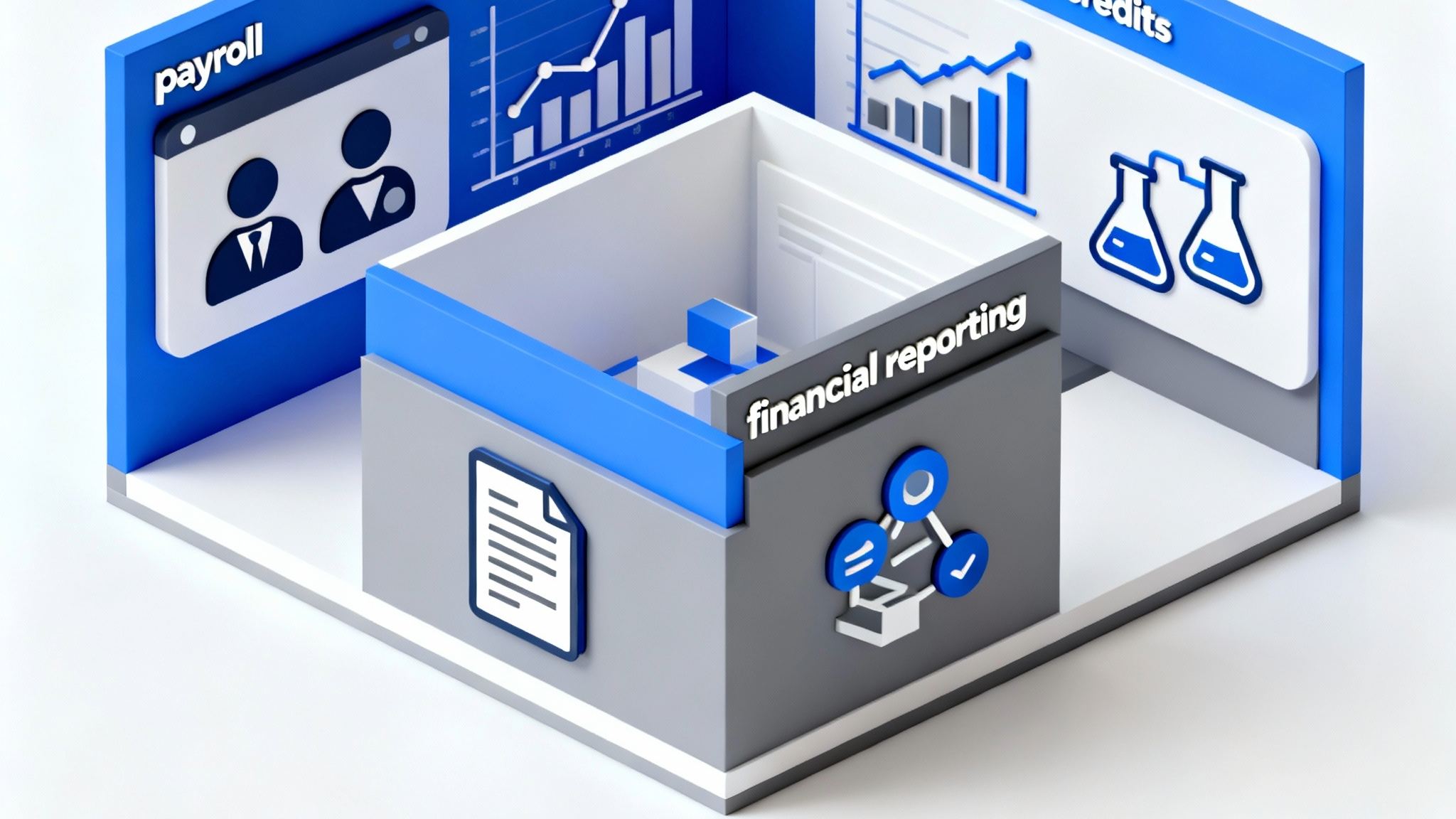Achieving Financial Independence, Retire Early (FIRE) is fundamentally an algebraic problem, governed by the rate at which one converts current income into invested assets. While managing expenses through rigorous frugality is a necessary foundation, the most powerful and often overlooked lever for hyper-acceleration is generating substantial extra earnings via a profitable side hustle.1
The journey to financial independence is governed by three primary levers that are within an individual’s control: (1) Decreasing the target retirement goals by cutting current expenses (a reduction in the necessary portfolio size); (2) Optimizing returns on investment (passive growth rate); and (3) Dramatically increasing income and, crucially, the resulting savings rate.2 For individuals who have already optimized their budget and are practicing aggressive frugality, the ability to earn extra earnings and dedicate that capital entirely to investment provides the non-linear acceleration required to radically cut the timeline to freedom.3
The mathematics behind this concept are shocking. The time required to reach financial independence decreases exponentially as the savings rate increases.
Table 1: The Non-Linear Power of the Savings Rate
| Savings Rate (%) | Required Working Years (Est. 5% Real Return, 4% SWR) | Impact on Timeline |
| 15% | $\approx$30 years | Standard Path |
| 25% | $\approx$25 years | Moderate Acceleration |
| 50% | $\approx$17 years | Significant Acceleration |
| 75% | $\approx$7 years | Hyper-Acceleration |
The table, inspired by established FIRE calculations, demonstrates that increasing the savings rate from a moderate 25% to an aggressive 50% does not merely halve the remaining time, but reduces it by approximately 32%, turning a decades-long commitment into a manageable 17-year strategy.4 Side hustles serve as the essential engine to power this dramatic shift in the savings rate.
Table of Contents
Toggle1. What are effective side hustles for increasing savings?
The effectiveness of a side hustle for FIRE acceleration is not measured by its gross revenue, but by two critical factors: its profit margin and its time cost. The most effective hustles are those that allow nearly 100% of the extra earnings to be channeled directly into the investment portfolio.6 This requires prioritizing high-margin, professional services over commoditized labor.
High-Value Service Arbitrage
The most efficient pathway to immediate, high-conversion cash flow is through leveraging skills already mastered in a 9-to-5 profession. This eliminates the steep learning curve and capital investment typically associated with launching a new venture.7 For example, individuals with professional experience in fields such as project management, technical writing, or corporate training can offer niche consulting services.8 These services typically command premium hourly rates and possess minimal overhead, such as office space or inventory costs, ensuring the high conversion of revenue into investable savings.
Digital Assets Creation and Scalable Passive Income
While consulting offers immediate high income, true long-term financial security and freedom are achieved by building passive assets. These are income streams that generate cash flow with low ongoing effort after a significant initial investment of time. Examples include writing and selling an e-book, creating a specialized online course, or developing and monetizing a niche application.9 These ventures are optimal because they break the direct link between time spent and earnings received, allowing for eventual scale and greater wealth accumulation.
The Shift to High-Margin Low-Volume
An expert strategy prioritizes quality over quantity. Side hustles that demand high volume (like ride-sharing or low-margin retail flips) necessitate constant active labor and managerial time, which are finite assets when balancing a full-time job. Conversely, high-margin, low-volume ventures (like niche consulting or high-end virtual assistance) monetize stored human capital and expertise, requiring fewer clients and less administrative overhead, thus preserving essential time and energy for managing the main job and focusing on investment growth.11
The fundamental difference between high-revenue, high-overhead hustles and high-margin, low-overhead hustles is profound. The latter converts a far greater percentage of revenue into actual savings. If a high-revenue hustle requires significant capital investment (inventory) or large administrative time sinks, the net profit margin decreases, severely limiting the amount of extra earnings that can be funneled into the FIRE portfolio.
2. How much can side hustles contribute to my FIRE goal?
The contribution of side hustles is not linear; it is leveraging marginal income that holds extraordinary power. Because the individual is presumed to be practicing maximum frugality and covering all existing expenses with their primary job, every dollar generated by the side hustle is a marginal dollar of surplus earnings.3 This surplus is directly allocated to investment, turbocharging the growth of the assets.
Quantifying the Exponential Acceleration
The mathematical impact of side hustles is stark. If a person maintains a 25% savings rate, their estimated time to financial independence is approximately 25 years. By using a side hustle to boost this rate to 50%, the time required drops significantly to around 17 years, effectively buying eight years of freedom.4
For those aiming for hyper-acceleration, the extra earnings required are substantial. To shift a person currently saving 25% of their income and aiming to retire early in 15 years instead of the expected 33 years, the side hustle must generate supplementary income equal to 88% of the main job’s earnings.2 This income must be invested entirely. For instance, if the primary income is $50,000 per year, the side hustle must contribute an additional $44,000 annually to reach the required savings velocity. This underscores why casual gig work is insufficient; the goals necessitate a highly profitable, professional venture.
Reinvestment Strategy and Compounding
The core strategy involves continuously reinvesting all generated cash flow into the portfolio for long-term growth.6 This accelerated funding means the investment assets start compounding earlier and grow larger before withdrawal, shortening the working years necessary to hit the FIRE target. The dollar earned today via a side hustle is mathematically more valuable than a dollar earned through the main job later, because it reduces the time the saver needs to work and maximizes the potential duration for compounding interest.8 This ability to reduce the time needed to work represents the ultimate measure of freedom secured by the side hustle.
3. What skills are needed for profitable side hustles?
Profitable side hustles rely on securing premium earnings by delivering non-commoditized value. This requires a transition from an employee mindset (being paid for time) to an entrepreneur mindset (being paid for results and intellectual assets).
The Essential Professional Baseline
Regardless of the niche, foundational professional skills are non-negotiable for success. These include robust organizational acumen necessary for managing multiple client commitments and deadlines, strong communication skills for client acquisition and management, and reliable technical skills relevant to the service offered (e.g., programming, accounting, or specialized trade skills).7 Successful virtual assistants, for example, leverage their existing expertise in remote administrative, technical, or creative support, allowing them to work flexible hours from anywhere with minimal startup friction.11
Marketing and Differentiators
To justify premium pricing and maximize income, the hustler must actively market their service, establish credibility, and build case studies. This means developing a unique and memorable “signature framework” for service delivery.11 This framework serves as intellectual property, simplifying the sales process and differentiating the service from lower-priced competitors.
The profitability of a hustle is maximized by moving high up the value chain—from transactional labor to consultative value. If the task is easily outsourced globally (e.g., basic data entry), competition drives down the potential earnings dramatically.14 Skills that require deeply integrated domain expertise or localized knowledge create a high barrier to entry, ensuring premium cash flow that efficiently funds the FIRE portfolio. Furthermore, integrating AI tools can automate administrative tasks like proposal creation, data analysis, and report generation, reducing the non-billable time commitment and allowing the hustler to focus on high-value client delivery.11
4. Can I manage a side hustle while working full-time?
The integration of a side hustle with a demanding full-time job introduces significant complexity and potential risk. Successful management requires treating time as a rigorously finite asset and proactively mitigating the risks of burnout and compliance failure.
The Time Budgeting Imperative
Successful balancing necessitates a zero-sum view of time. A disciplined approach requires rigorous scheduling where time is explicitly dedicated to day job responsibilities, side hustle tasks, and non-work pursuits (including essential recovery and rest).16 This systematic time budgeting avoids chaos and ensures both professional roles are maintained effectively. Individuals should leverage small blocks of time (e.g., 15–30 minutes) effectively, avoiding the “all-or-nothing” tendency that stalls progress.16
Operational discipline is key. Analysts suggest implementing robust task-tracking systems, such as Kanban boards, and religiously scheduling events on a calendar. This organizational structure minimizes cognitive load and provides a centralized source of truth for all responsibilities, preventing critical tasks from being forgotten amidst the dual workload.17
Preventing Burnout and Maintaining Security
The aggressive pursuit of financial independence can sometimes lead to professional burnout, characterized by chronic stress, cynicism, irritability, and diminished productivity and enjoyment.18 Burnout is not merely exhaustion; it is an occupational phenomenon that results from unmanaged chronic workplace stress and threatens the viability of the entire FIRE strategy.19
Therefore, prioritizing mental and physical well-being is not a luxury but a critical component of the long-term strategy.16 A hustle designed to provide financial freedom should not result in chronic health issues. A strategic assessment of time allocation and energy levels is required to ensure that the pursuit of extra earnings does not compromise the security of the primary income source or derail long-term goals.
Navigating Legal and Ethical Compliance
As earnings grow, legal and ethical compliance risks concerning the primary employer become paramount. Prudent management requires proactive assessment of potential conflicts of interest.20 This includes ensuring there are no divided loyalties where time and energy are diverted away from the main job, ensuring strict safeguarding of confidential information and trade secrets, and confirming that the side business operates outside the competitive scope of the primary employer.20 The employee must clearly delineate that the side business is disconnected from company involvement or support to protect the company’s brand and reputation, safeguarding the main assets of the primary income stream.
5. How do I find the right side hustle for me?
Finding the ideal side hustle requires a structured framework that intersects personal capital (skills and interests) with market reality (demand and time feasibility), ensuring long-term sustainability and growth potential.
The Personal Framework for Selection
The process of selection can be mapped onto three intersecting factors 11:
- Existing Skills and Knowledge: Start with what is already known—be it professional expertise (e.g., coding, accounting), practical skills (e.g., teaching, carpentry), or niche hobbies (e.g., design, crafting).7
- Market Need and Demand: Is there an audience willing to pay for this skill or product? A skill without demand is merely a hobby.
- Feasibility and Time Commitment: Does the hustle realistically fit into the existing schedule and capacity without leading to burnout?
A hustle that monetizes a hobby or existing interest is far more sustainable than one chosen solely for financial potential.1 Since the FIRE timeline often spans 5 to 15 years, sustained effort is mandatory. A hustle rooted in passion helps secure long-term freedom by making the work itself enjoyable.
Strategic Testing and Portfolio Building
It is recommended to begin with smaller, low-risk projects to test the market demand and refine the service delivery mechanism. This initial phase is an investment in building an impressive collection of case studies and client testimonials. This established credibility is essential for later pursuing larger, high-ticket contracts, dramatically increasing the potential for high-volume earnings and accelerating wealth accumulation.11 The long-term strategy should always lean toward hustles that can eventually be transitioned into passive cash flow through productization, rather than those that remain purely transactional.9
6. What time commitment is required for side hustles?
The required time commitment varies dramatically based on where the hustle falls on the time-effort spectrum, which ranges from intensely active labor to minimal passive maintenance.
The Time-Effort Spectrum
- Active Gigs: These include services like driving for ride-sharing, freelancing, or pet sitting.21 They offer quick, predictable cash flow but are constrained by the number of available hours. Their scalability is strictly limited, as income is traded directly for time.
- Passive Assets: These require a significant, often intense, upfront time investment for development (e.g., building an application, writing an online course).21 However, once established, they require minimal ongoing time commitment, providing true passive income streams and genuine freedom.9
For FIRE accelerators, the ideal approach balances the two. Active, high-ticket hustles provide the immediate, rapid cash flow needed to fund the investment portfolio now, while a dedicated portion of time and capital is simultaneously invested in building scalable passive assets for long-term security and eventual early retirement.
A critical factor often overlooked is the hidden cost of time: the administrative load (invoicing, marketing, client communications) that is non-billable. This time must be factored into the overall ROI calculation for the hustle. The ultimate goal of the side hustle is to buy back time. If the time required significantly detracts from recovery, sleep, or the performance of the main job, the overall FIRE strategy is jeopardized.16 Therefore, setting an intentional cap on the weekly time commitment is a mandatory self-preservation measure.
7. Are online side hustles better than offline ones?
The debate between online (digital) and offline (IRL) hustles is highly nuanced, dependent primarily on the individual’s skill set and competition levels. Neither option is universally superior; the expert approach involves a strategic diversification based on profitability and scalability.
The Online Competition Trap
Online hustles (e.g., global freelancing, digital marketing) offer limitless scalability as they are not restricted by geography, making them ideal for building passive assets.14 However, this accessibility is also their weakness. The barrier to entry is low, leading to intense, global competition. Reports suggest that the vast majority (up to 95%) of individuals pursuing general online gigs earn below minimum wage dueing to global competition and difficulties with self-management.14 Success online demands that the individual be significantly better than the average competitor to command premium rates and secure high earnings.
The Offline ROI Advantage
Offline or IRL services (e.g., specialized trade services, local high-end consulting, rental income) often benefit from low competition within a specific local area.14 This localized barrier to entry frequently results in higher, more immediate Return on Investment (ROI) and predictable cash flow. For rapid initial FIRE acceleration, generating $500 to $1,000 per month is often more reliably achieved through a specialized local service (like personal training, specialized tutoring, or local trade work) where competition is scarce.14
The Expert Hybrid Strategy
The most effective FIRE strategy combines the strengths of both models. It involves beginning with a high-ROI, high-margin local or IRL service to generate rapid extra earnings for the investment portfolio. Simultaneously, the hustler allocates a small portion of time and revenue to building a scalable online presence or converting their service knowledge into a digital product (productization), ensuring long-term growth and passive cash flow potential.22 This strategy maximizes immediate savings while preparing for future, time-independent wealth generation.
8. How can I scale my side hustle income?
Scaling a side hustle is the transition from trading time for money to building systems and assets that generate income independently of continuous effort. This is achieved through productization and automation.
The Productization Blueprint
Scaling service-based income requires decoupling earnings from time by transforming services into repeatable, fixed-price packages, known as “productized services”.23 Rather than offering hourly, custom consulting, an expert might offer a “Fixed-Price SEO Audit Package” or a “Website Design Package”.23 This standardization simplifies pricing, drastically reduces endless negotiations, and allows for rapid, consistent delivery to a larger client base.24
The essential secret to achieving successful growth via productization is having a rock-solid, repeatable internal process.24 This process must first be manually developed and refined to solve the client’s problem consistently, and then documented in detail. The internal process converts personal labor and knowledge into a systemized, sellable asset.
Automation and Strategic Outsourcing
Technology serves as the primary multiplier for scaling. Workflow automation tools (e.g., Zapier, IFTTT) integrate various applications (CRM, billing, email marketing) to handle routine administrative overhead automatically.15 Customer interaction and follow-ups can be automated via CRM platforms (HubSpot, Zoho One), while appointment scheduling tools (Calendly) eliminate the back-and-forth emails, reducing administrative time commitment.15
Once a process is repeatable and documented, the ultimate scaling strategy is outsourcing. By hiring virtual assistants or contractors to execute the standardized, low-leverage steps within the process, the owner buys back their time, allowing them to focus exclusively on high-value activities like sales, strategy development, and further asset creation. This mechanism converts active earnings into scalable passive cash flow, maximizing long-term wealth potential.
9. What are common challenges with side hustles?
While side hustles offer tremendous potential for FIRE acceleration, they introduce significant risks that must be proactively managed, including threats to mental health, legal standing, and security.
Burnout: The Silent Killer of FIRE
The most immediate threat to the strategy is burnout. Defined by the World Health Organization as resulting from unmanaged chronic workplace stress, burnout manifests as feelings of energy depletion, exhaustion, increased cynicism, and reduced professional efficacy.19 When balancing a full-time job and a side hustle, this risk is amplified.18
Mitigation requires rigorous self-awareness and boundary setting. The FIRE accelerator must view adherence to the time budget and prioritizing physical and mental health (sleep, rest, personal time) as mission-critical tasks.16 Failure to manage chronic stress leads to failure in both the primary income source and the side hustle, instantly derailing long-term goals.19
Legal Compliance and Asset Security
As side hustle earnings increase, legal complexity rises, posing a material risk to accumulated assets and personal wealth. Most side hustles begin as sole proprietorships, but rapid growth necessitates forming a formal business entity, such as a Limited Liability Company (LLC) or Corporation, to separate business liability from personal assets.25
These entities carry ongoing compliance requirements, including obtaining necessary business licenses, maintaining a registered agent, and filing annual reports and franchise taxes.25 If a business entity fails to comply with these requirements, it can fall out of “good standing” with the state, potentially exposing the owner’s personal assets to business liabilities. The cost of professional legal and accounting compliance must therefore be integrated into the side hustle budget as a necessary investment in security for the overall FIRE portfolio.25
10. How do taxes affect income from side hustles in FIRE planning?
Tax planning is the final and perhaps most potent lever a side hustle provides for FIRE acceleration. While self-employment introduces complexity and additional tax liabilities, it simultaneously unlocks powerful tax-advantaged investment vehicles that dramatically boost portfolio growth.
Self-Employment Tax Fundamentals
Any extra earnings derived from freelancing or contracting activities classifies the individual as self-employed.26 All income must be tracked and reported to the IRS, typically using Schedule C (Profit or Loss from Business), once net earnings exceed $400.27 A crucial reality check is that self-employment income is subject not only to federal and state income taxes but also to self-employment tax (covering Social Security and Medicare), which is generally 15.3% of net earnings.26
The primary advantage offsetting this higher tax rate is the ability to deduct legitimate business expenses related to the hustle. These deductions—which require meticulous record-keeping—reduce the taxable income, often partially mitigating the self-employment tax burden.26
Strategic Use of Tax-Advantaged Retirement Vehicles
The most critical component of the side hustle tax strategy is the access it provides to high-limit retirement accounts. These self-employed plans allow for significantly larger tax-deferred savings contributions than traditional employer-sponsored plans, drastically accelerating the growth of financial independence assets.
The Solo 401(k) is ideal for businesses with no employees other than a spouse. It offers the highest contribution limits, allowing the individual to contribute both as an employee (salary deferral, up to $23,000 for 2024) and as an employer (profit sharing contribution, up to 25% of net self-employment earnings).28 This potential for dual contributions allows FIRE accelerators to potentially double or triple their annual tax-sheltered investment, providing a maximum turbo-boost to the portfolio.
The SEP IRA (Simplified Employee Pension) is easier to establish and has broader eligibility (available even if the business has employees). However, contributions are employer-only (up to 25% of compensation, limited to $69,000 for 2024), generally resulting in lower total contributions for middle-income entrepreneurs compared to the Solo 401(k).28
Table 2: Comparison of Self-Employed Tax-Advantaged Retirement Accounts
| Feature | Solo 401(k) | SEP IRA |
| Eligibility | Owner/Spouse only; must have self-employment income 28 | Owner, with or without employees; must have self-employment income 28 |
| Contribution Potential | Highest limits: Employee deferral ($\$23,000$, 2024) + Employer match (25% net income) 28 | Employer contributions only (up to 25% of net earnings) 29 |
| Complexity | Higher administrative complexity | Easier to set up and maintain 28 |
| Ideal For FIRE | High-earning accelerators focused on maxing out tax-sheltered savings | Simplicity and broad eligibility, especially with staff |
The ability to utilize these high-limit vehicles is paramount. The FIRE strategy requires rapidly accumulating assets to reach the 25x annual expenses benchmark. By maximizing tax-deferred savings via the Solo 401(k), the portfolio grows faster, shielded from annual taxation, securing the trajectory toward early retirement.
Conclusion: Side Hustles as the Ultimate Engine for Wealth and Freedom
Side hustles represent the definitive strategic shift for the modern FIRE adherent. They transform the journey from a painful exercise in extreme frugality and deprivation into a focused, aggressive endeavor in income growth and strategic investment. The analysis confirms that a well-chosen, high-margin side hustle acts as a financial turbocharger, dramatically increasing the savings rate—the single most impactful variable in the FIRE equation.
To successfully accelerate financial independence, individuals must transition their thinking from viewing extra earnings as mere supplemental cash flow to viewing them as leveraged investment capital, capable of purchasing years of freedom. This requires meticulous planning: selecting scalable, high-value hustles, integrating automation to build passive assets, adhering to rigorous time budgeting to prevent burnout, and critically, leveraging self-employment status to exploit high-contribution tax-advantaged assets. By mastering these mechanics, the ambitious goal of early retirement transitions from a distant aspiration to a tangible, accelerated reality.





